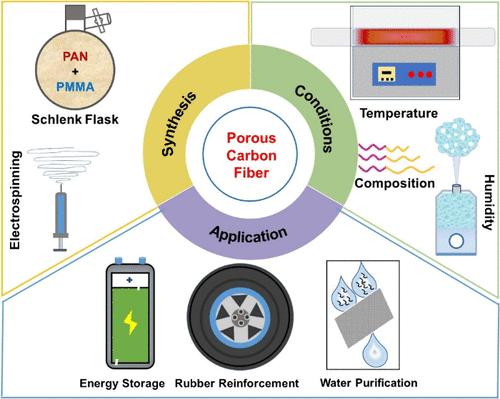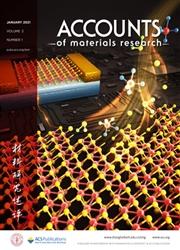Block Copolymer Based Porous Carbon Fiber─Synthesis, Processing, and Applications
IF 14
Q1 CHEMISTRY, MULTIDISCIPLINARY
引用次数: 0
Abstract
Carbon is an abundant material with remarkable thermal, mechanical, physical, and chemical properties. Each allotrope has unique structures, properties, functionalities, and corresponding applications. Over the past few decades, various types of carbon materials such as graphene, carbon nanotubes, carbon quantum dots, and carbon fibers have been produced, finding applications in energy conversion and storage, water treatment, sensing, polymer composites, and biomedical fields. Among these carbon materials, porous carbons are highly interesting owing to their large surface areas and massive active sites to interact with molecules, ions, and other chemical species. The pore size and pore size distributions can be tunable (micro-, meso-, and macro-pores), providing chemical species with hierarchical structures to transport with low resistances. In this context, designing carbon precursors and preparing porous carbon with desired structures, properties, and functionalities are highly significant.

嵌段共聚物基多孔碳纤维─合成、加工与应用
碳是一种丰富的材料,具有显著的热、机械、物理和化学性能。每个同素异形体都有独特的结构、性质、功能和相应的应用。在过去的几十年里,各种类型的碳材料如石墨烯、碳纳米管、碳量子点和碳纤维已经被生产出来,在能量转换和储存、水处理、传感、聚合物复合材料和生物医学领域得到了应用。在这些碳材料中,多孔碳是非常有趣的,因为它们具有大的表面积和大量的活性位点,可以与分子、离子和其他化学物质相互作用。孔径和孔径分布是可调的(微孔、中孔和大孔),为化学物质的输送提供了低阻力的分层结构。在这种情况下,设计碳前体和制备具有所需结构、性能和功能的多孔碳具有重要意义。
本文章由计算机程序翻译,如有差异,请以英文原文为准。
求助全文
约1分钟内获得全文
求助全文

 求助内容:
求助内容: 应助结果提醒方式:
应助结果提醒方式:


